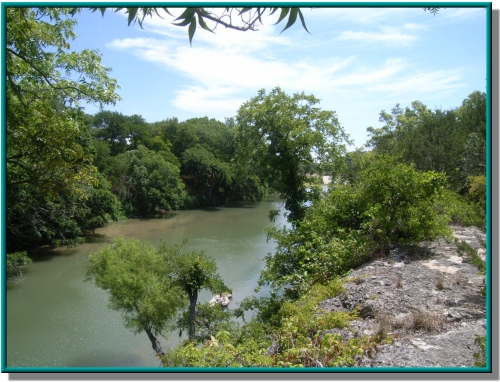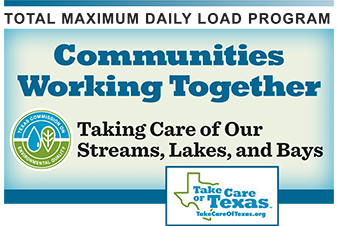Lampasas and Navasota Rivers
Counties: Bell, Burnet, Hamilton, Lampasas, Limestone, Madison, Robertson
Parameter: Bacteria
River Basin: Brazos
Segment: 1209J, 1209K, and 1217
On this page:
Overview
In 2008, the TCEQ found that concentrations of bacteria exceeded the water quality criteria to protect the safety of contact recreation in two tributaries of the Navasota River and a segment of the Lampasas River.
High concentrations of bacteria may indicate a health risk to people who swim or wade in a water body—activities called “contact recreation” in the state’s standards for water quality.
Because the impairments to the recreational use were identified based on a relatively small number of water samples, TCEQ’s TMDL Program led an intensive sampling and analysis project for the three streams. Bacteria, flow, and field data were collected to assess the extent of bacteria loadings. The goal of the project was to determine the most appropriate strategy for managing bacteria concentrations in the streams.
Watershed Description
The Navasota and Lampasas Rivers are part of the larger Brazos River Basin. Three segments, all in largely rural areas, were included in the project:
- Shepherd Creek, Segment, 1209J
- Steele Creek Segment, 1209K
- Lampasas River Above Stillhouse Hollow Reservoir, Segment 1217
Shepherd Creek is located primarily in Madison County. Steele Creek flows through Robertson and Limestone counties. Both of Shepard Creek and Steele Creek are tributaries of the Navasota River.
The Navasota River is 125 miles long, crossing Limestone County and serving as the county line between Leon and Robertson, Madison and Brazos, and Brazos and Grimes counties before reaching its mouth on the Brazos River in southwestern Grimes County.
Shepard Creek flows across its northeastern corner into Segment 1209, the Navasota River Below Lake Limestone. In Limestone County, Segment 1209K flows across level to rolling terrain in the southern part of the county. It continues across the flat to gently rolling terrain in the north-eastern corner of Robertson County, where it merges with Segment 1209.
The Lampasas River rises in eastern Mills County and flows southeast for 75 miles through western Hamilton, eastern Lampasas, northeastern Burnet, and western Bell counties. Segment 1217 flows from the origin of the river in Mills County downstream to Bell County.
Segment 1217 crosses gentle to high rolling prairie, wooded areas, and steep slopes with limestone benches. In Lampasas County, this segment overlies the Trinity Group aquifer. Segment 1217 ends at the western end of Stillhouse Hollow Reservoir in Bell County, which is on the Balcones Escarpment.
Status
Project results were examined by the Surface Water Quality Monitoring Team. Segment 1217 was removed from the 303(d) list in 2010. The Standards Work Group reviewed the use and associated criteria for Segments 1209J and 1209K and recommended their standards be revised to secondary contact recreation 1. The EPA has approved this change for Shepherd Creek (1209J). An EPA decision is still pending for Steele Creek (1209K). See the analyses on the webpage Brazos River Recreational Use Attainability Analysis, Part 3. Contact the Standards Group at standards@tceq.texas.gov or 512-239-6682 for more information about the standards.
Public Participation
The TCEQ coordinated participation activities in the Lampasas watershed with staff at the Texas AgriLife Blackland Research and Extension Center. Though no TMDLs were developed, the Research and Extension Center led area stakeholders in development of the Lampasas River Watershed Protection Plan .
Contact the TMDL Program
Please e-mail tmdl@tceq.texas.gov, and mention the Lampasas and Navasota Rivers project in the subject line. Or call us at 512-239-6682.





 Back to top
Back to top